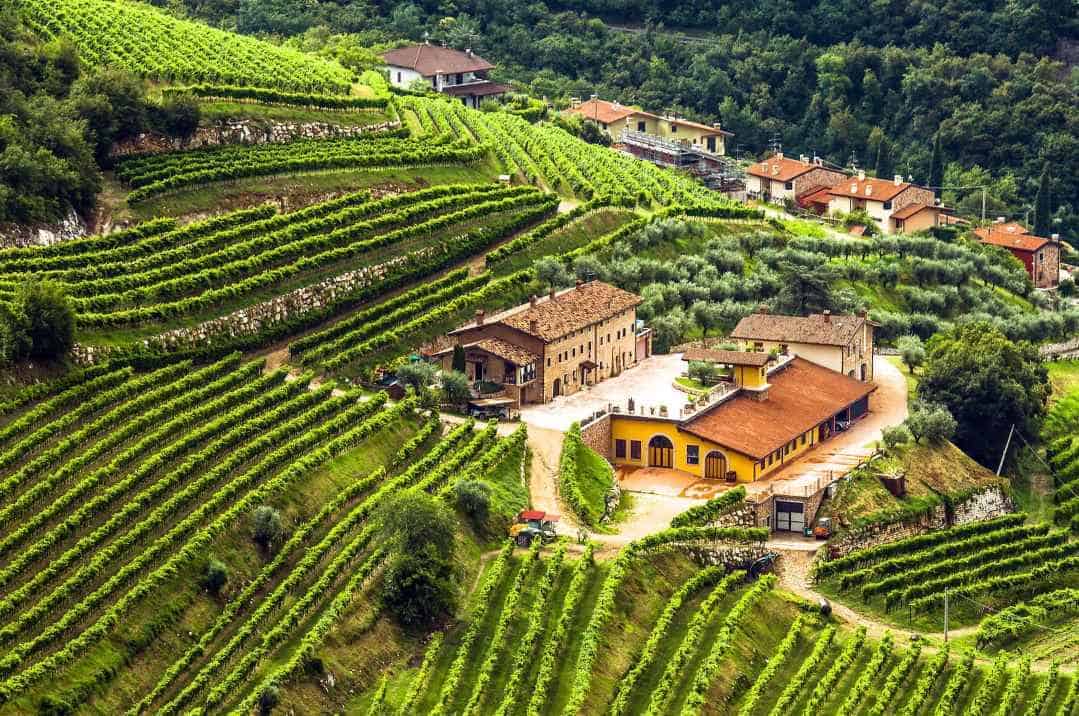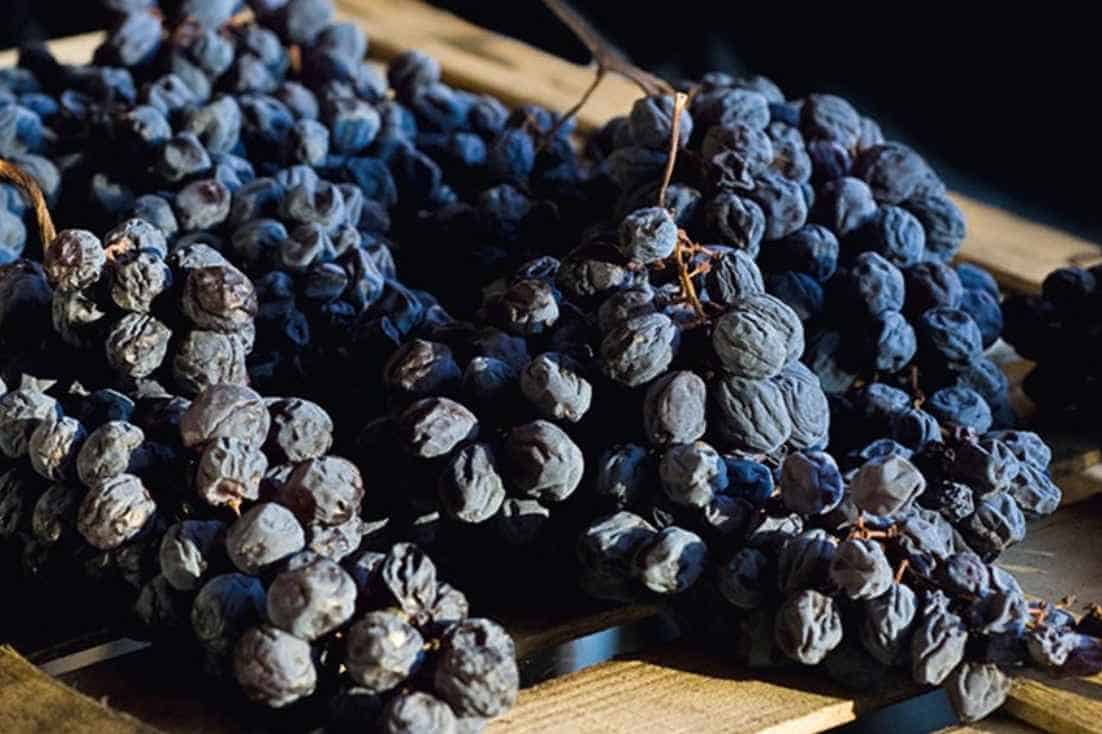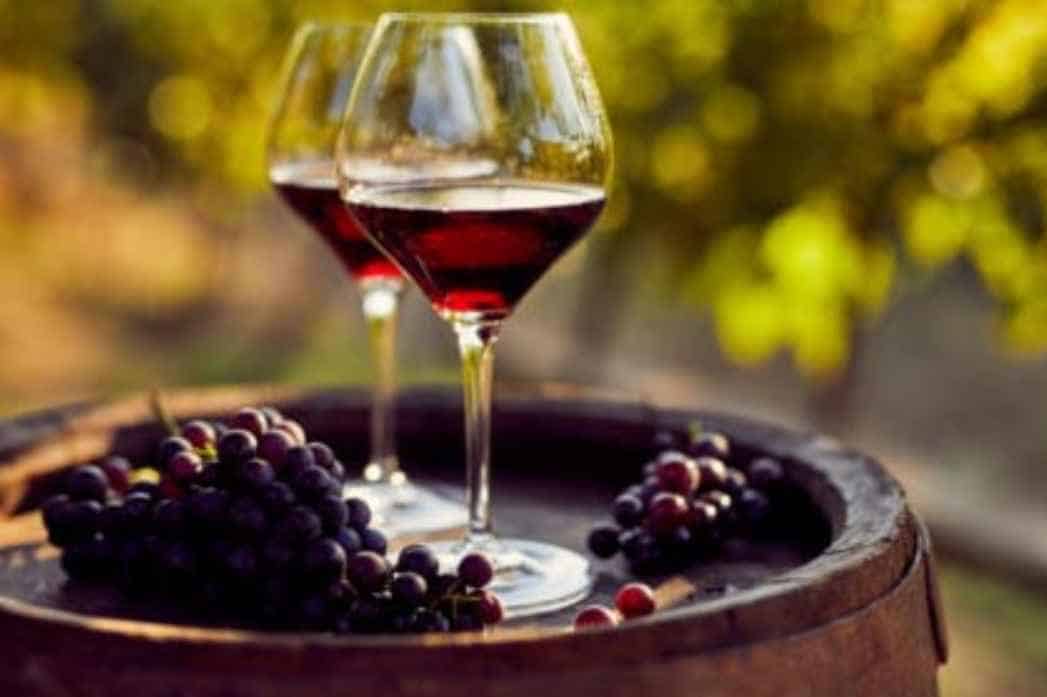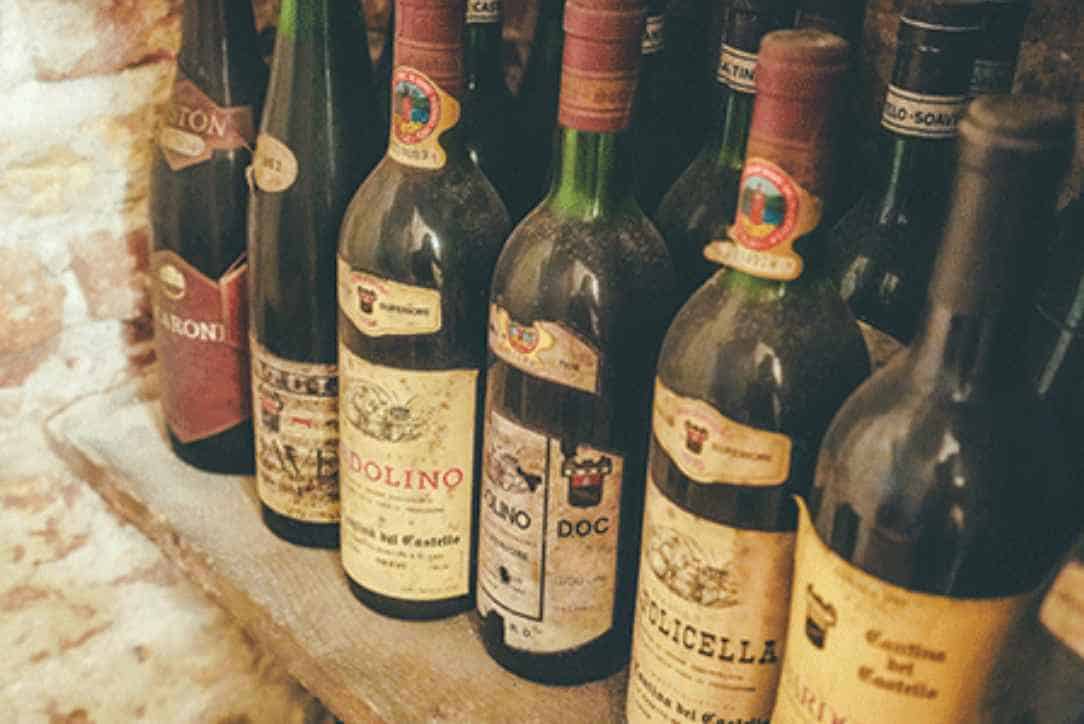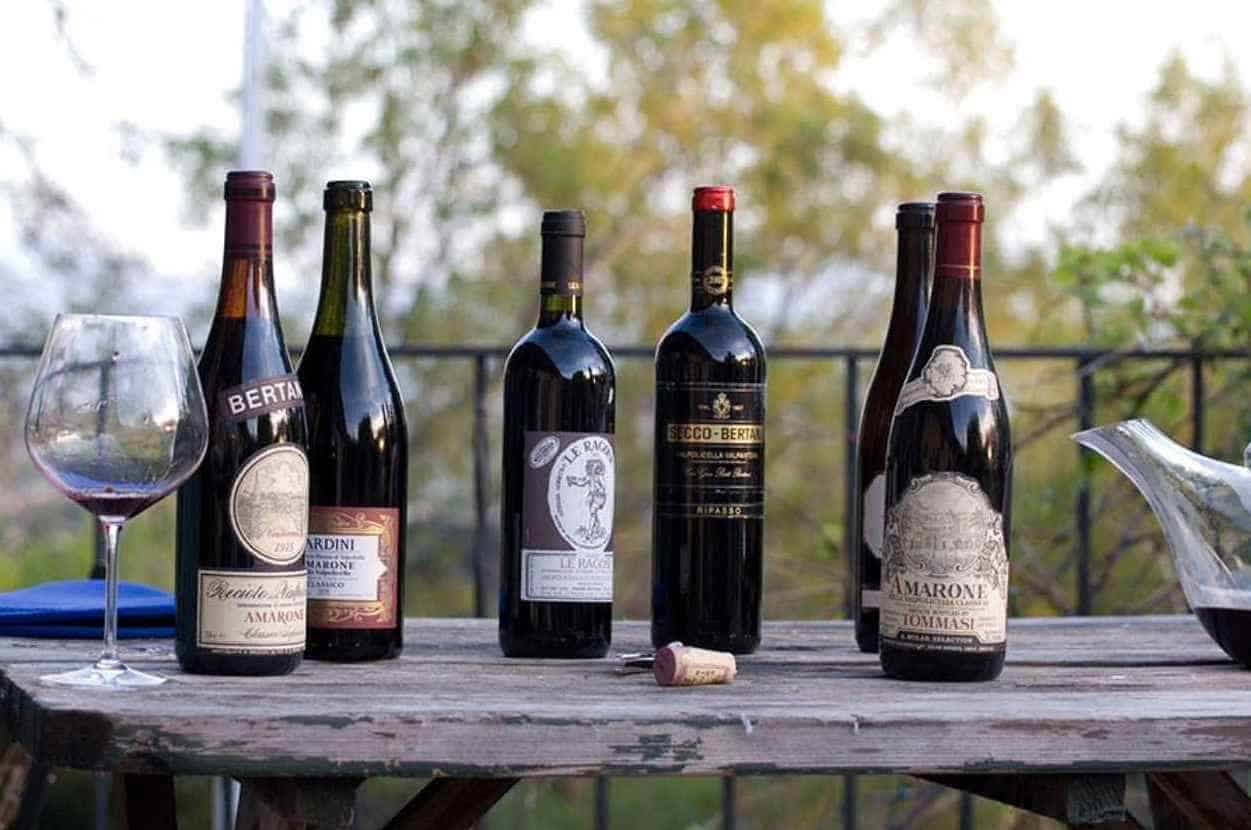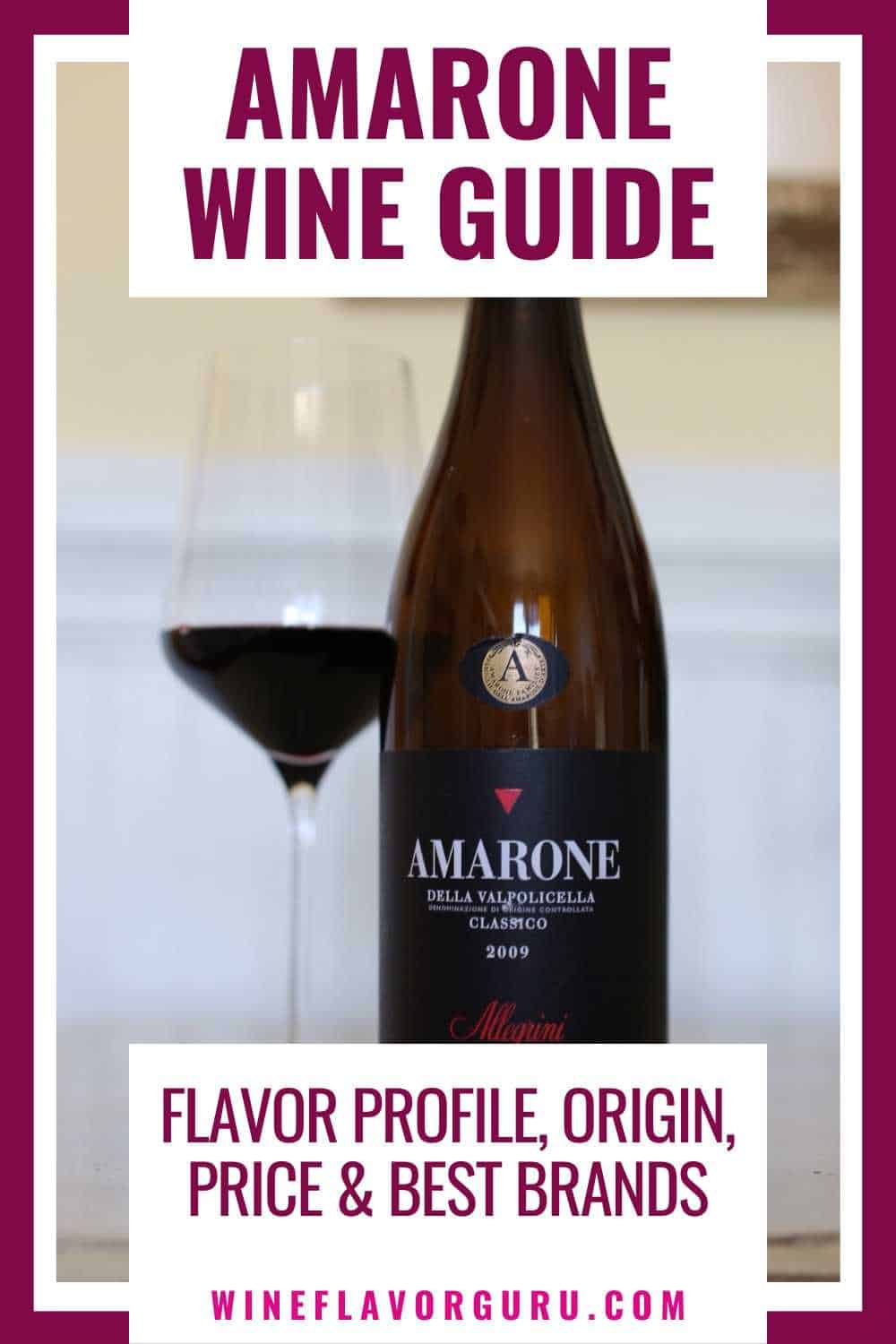Chances are, you may or may not know about Amarone wine. This rich-in-flavor wine has been on the market for a long time, but a few still don’t recognize its marvelousness. So to give it the attention it deserves, we’ll discuss what is Amarone wine and why you should try it.
Flavor Profile of Amarone Wine
| Tannin | Low to medium-tannin |
| Acidity | Medium-plus acidity |
| Body | Medium-bodied |
| Alcohol | 15% to 16% ABV |
| Primary Notes | Cherry liqueur – Cinnamon – Floral – Dried fruit – Mushroom – Wood – Leather – Tobacco – Cocoa |
Amarone wine is a rich, complex, and intense red wine made in Valpolicella, one of the winemaking regions in Italy. It is known for its high alcohol content, which fits those who want something strong. But of course, Amarone wine is also rich in flavor, and you’ll find a lot of distinct notes when you drink it.
Furthermore, Amarone is made from dried Corvina, Rondinella, and Corvinone grapes; these varieties have deep-colored skins that give the wine a marvelous red color.
Taste
Due to the winemaking process, Amarone wine has a concentrated taste which means it is packed with bold flavors. You can taste black cherry and chocolate on the palate, as well as a hint of medium-plus acidity.
You can also taste some oak due to the aging process and a hint of brown sugar and raisins. The longer the aging, the stronger the flavors will be. Additionally, Amarone wine is relatively drier than sweet.
Aroma
Amarone is a very fragrant wine. It has a bold aroma where notes of peppercorns, cinnamon, cherry liqueur, and nutmeg will linger on your nose. You can also expect a strike of dried plums and a robust earthy note due to mushrooms and cocoa.
Body
Amarone wine is known for being a full-bodied drink, giving it a heavy mouthfeel. Although a little heavy, unsurprisingly, Amarone is very smooth and soft to the mouth because of its velvety texture.
Color
Most Amarone wines you can find today have a deep, ruby color. These young varieties have only been aged for approximately five years. But if you have an older Amarone wine, you’ll notice it is darker.
This is because the bright red color dissipates as it ages, and the wine develops orange hues that later become dull-looking. So for the best color and intensity, you should find only about 5 to 10 years old Amarone wine.
Origin of Amarone Wine
Amarone originated in Valpolicella, Italy, among the largest premium wine producers with DOC and DOCG tags. And this is the only region that produces authentic Amarone wines.
Furthermore, the wine you’ll usually find from this region is the Amarone Della Valpolicella, a relatively costly wine among the most prestigious wine in the region. But the price is worth it since it is a luscious red wine with a rich taste and mouth-watering aroma.
How Amarone Wine is Made
What sets Amarone apart from other wines is its winemaking process. It goes through a long process before being bottled and ready for consumption. Here is an overview of how long Amarone winemaking usually takes.
| Processes | How long it takes |
| Harvesting | 1 to 3 months (ripening period) |
| Grape-drying | Four months |
| Fermenting | 20 to 45 days |
| Oak aging | 2 to 5 years |
Harvest
Harvesting the grapes used for Amarone wine takes a bit of time. This is due to the late-ripening characteristic of the Corvina and Rondinella grapes, which need at least one month longer to ripen than standard grapes.
They best grow in warm to cool climates like what Valpolicella has, and you can hardly find them in other regions with complex climates.
Furthermore, like other quality grapes, harvesting Corvina and Rondinella requires the manual method where farmers handpick the grapes.
This is to ensure the vines will remain intact and safe from any shredding of the leaves. Handpicking also ensures that the grapes harvested are in their best shape and have the right ripeness.
Winemaking Process
Appassimento is a unique method of drying the grapes used to make Amarone wine. Only a few wine varieties are made using this method, making them far top-tier than other wines.
For Amarone wine, this grape-drying method gives it a concentrated taste compared to regular wines. However, although this process usually results in a highly sweet-tasting wine, Amarone is relatively dry because of how long the fermentation takes.
This prolonged process helps to break down the sugar and turn it into alcohol, so Amarone wine tends to be dry and has strong alcohol.
Oak Aging
After fermentation, Amarone wines generally go through oak aging, in which they are aged for at least two years in a wood/oak barrel. This gives off a nice oak note on the palate and the nose.
Why is Amarone Wine Expensive?
A standard bottle of Amarone wine costs around $50 to $100, which is pretty expensive for only a bottle. However, there’s a reason for its price and why it is reasonable and worth it.
Amarone wine is made from dried grapes, which means it goes through an extra drying process before becoming a beverage. This takes a certain amount of months and is also pretty laborious.
Moreover, Amarone wine also requires more grapes than usual; sometimes, it needs twice the amount since it uses dry grapes, which means less pressed liquid. Finally, the whole winemaking process, from harvesting to bottling, takes a minimum of three years.
When should I drink Amarone Wine?
To best enjoy Amarone wine, try to drink it without partnering with certain food items. This will help you taste the wine and enjoy its distinct notes, free from any flavors that compete with its natural taste.
Amarone wine is also best if poured first in a decanter rather than serving it directly in a glass. Decanting it for a few hours before serving will let the wine residue sink in the bottom. And when it is time to pour, you are left with a smooth, rich wine.
How to Enjoy Amarone Wine
You don’t want to spoil your Amarone wine experience by messing up with the basic things, such as the serving temperature, glassware, and food pairings. So to help you make the most out of your Amarone wine adventure, here are the ideal ways to enjoy it.
| Elements | Ideal |
| Temperature | 17-19°C |
| Glassware | Bordeaux glass |
| Food Pairing | Braised beef – Cheese – Pasta – Spare ribs – Game meat – Pulled Pork – Black Angus Steak |
Temperature
The temperature plays a major role when drinking wine because if you don’t know the right temperature to best enjoy your drink, you’ll ruin your experience.
Drinking a wine that is too warm is unpleasing, and drinking it too cold can alter the overall flavor and ruin the aroma of the wine. So, to ensure your Amarone wine is best, drink it within 17-19°C.
Glassware
Since Amarone is a full-bodied wine, it is best served in Bordeaux glass. The shape and depth of this glass help you to enjoy the decadent aroma of the wine while helping to lessen the acidity and alcohol that goes to your nose.
Food Pairings
If you want balance, pairing your Amarone wine with meats, cheeses, games, or other food with complex flavors means you are up for something good.
These pairings perfectly balance the rich taste of Amarone wine. Of course, this wine is excellent and goes for any occasion; however, pairing it with some food is even better.
Tips when buying Amarone Wine
Being well-informed is the way to purchase the best bottle of Amarone wine. You can’t buy any wine you see because it is Amarone; you must check the bottle first. And there are three essential things to check to identify a quality Amarone wine:
1. Vintage
When looking at wine bottles, you’ll always see a year on their label, which we call “vintage.” It was the date when the grapes used for winemaking were harvested. So for Amarone wines, if you are looking for something complex, bright colored, and intense, going for 2015 is the best.
This is because the seasons at that time were great, the waters were clean, and the grapes were in their best shape and condition. So if you find a 2015 vintage Amarone wine, save that up, and you’ll get to taste a luscious, mouth-watering wine.
2. Tag
When choosing between different Amarone wines, thoroughly look at the bottle. If you find a DOCG tag, you are holding a great bottle of wine.
Having this tag means you can tell where it came from and pass the necessary stages before being sold to the public. You can also avoid purchasing fake Amarone wines through this tag.
3. Producer
If you are trying to find the best Amarone wine, regardless of the price, looking for the winery that produced it is a great way to determine its quality. Ideally, Giuseppe Quintarelli is at the top of the list if you want something luxurious. This winery in Valpolicella produces premium Amarone wines any wine-lover should not miss.
But if the price tag is not within your budget, you can opt for affordable yet quality Amarone wines from good wineries like Valentina Cubi and Fratelli Vogadori.
Best Amarone Wine Brands
There are over a dozen premium Amarone wines in the market today, and below are five of the best ones you should have.
| Wine | Avg. Price | Vintage | Brand |
| Amarone Classico Della Valpolicella | $70 | 2017 | Le Salette |
| La Mattonara | $290 | 2009 | Zymé |
| Amarone Della Valpolicella Classico Riserva | $95 | 2013 | Zenato |
| Amarone Della Valpolicella Classico | $100 | 2012 | Bertani |
| Fieramonte | $280 | 2015 | Allegrini |
Conclusion
Now that you know what Amarone wine is, it is time to discover this premium wine and know why it is one of the best. And to best enjoy it, make sure you take note of everything we detailed here, so you’ll have the best Amarone wine experience.

George Moore, co-founder of Wine Flavor Guru, is a charismatic entrepreneur with a rich background in California’s wine industry. Alongside Sylvia, he transformed a Sonoma County vineyard into a source of premium wines. George’s expertise in sourcing exceptional grapes and his approachable style make wine appreciation both accessible and engaging.

